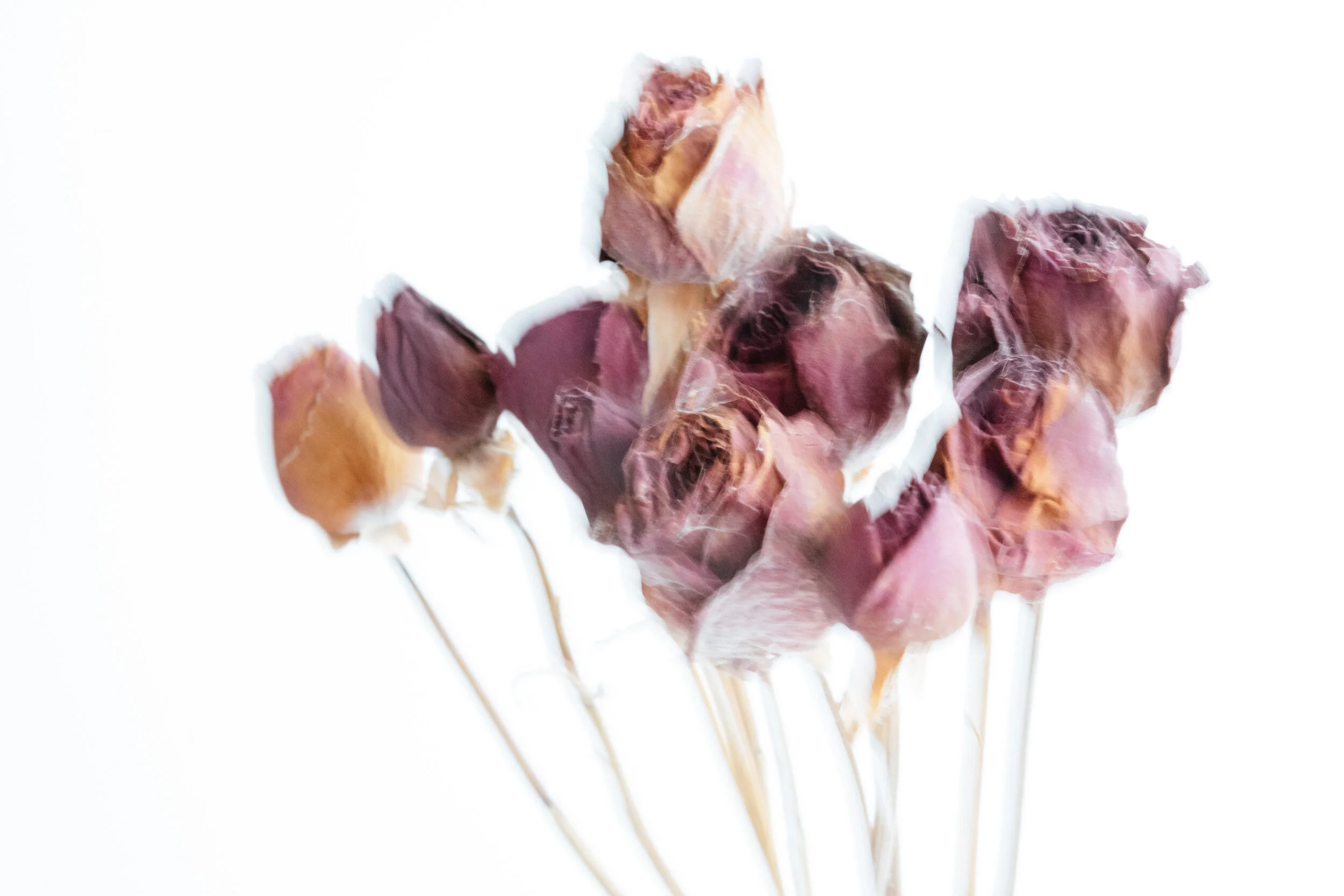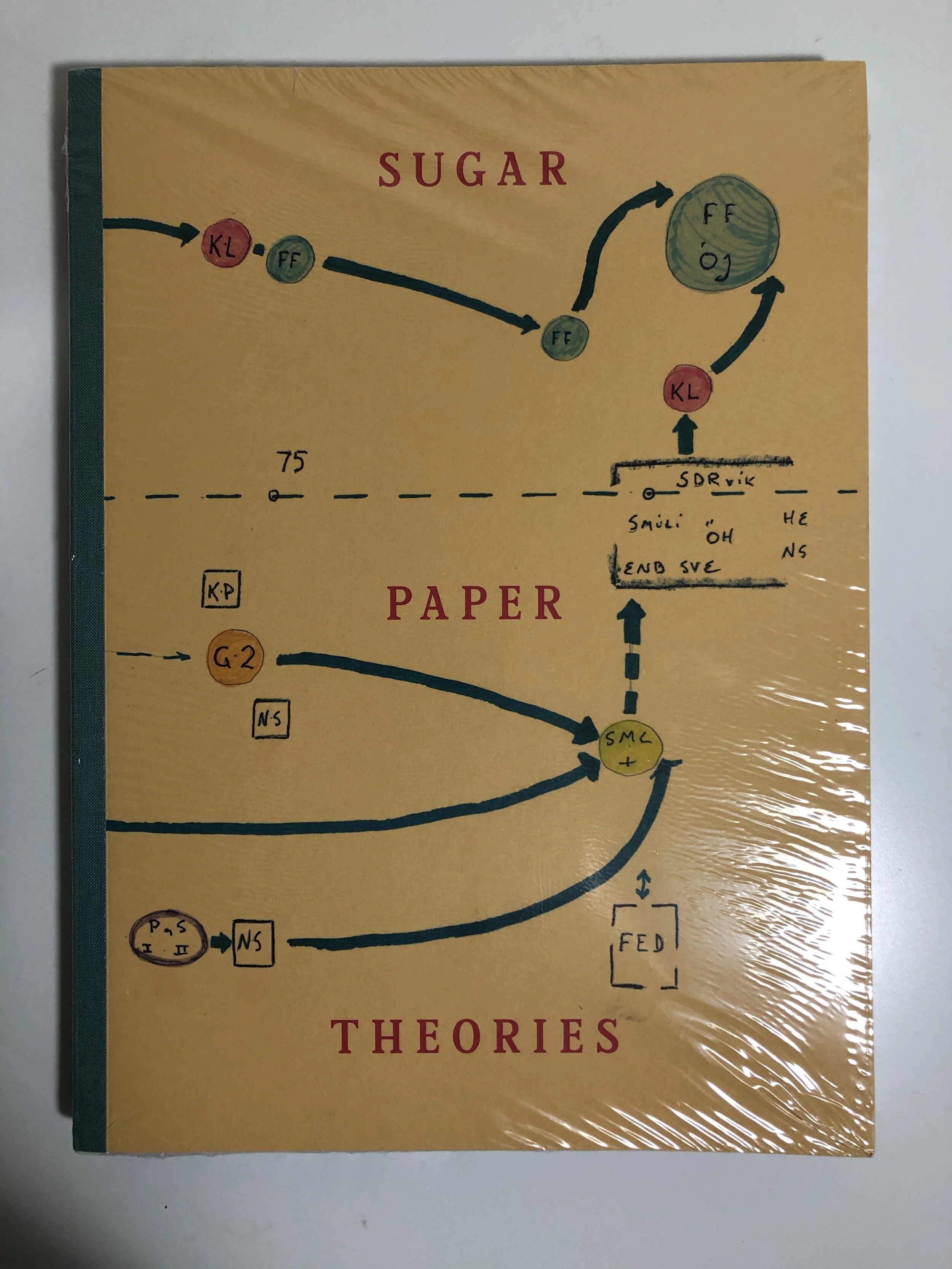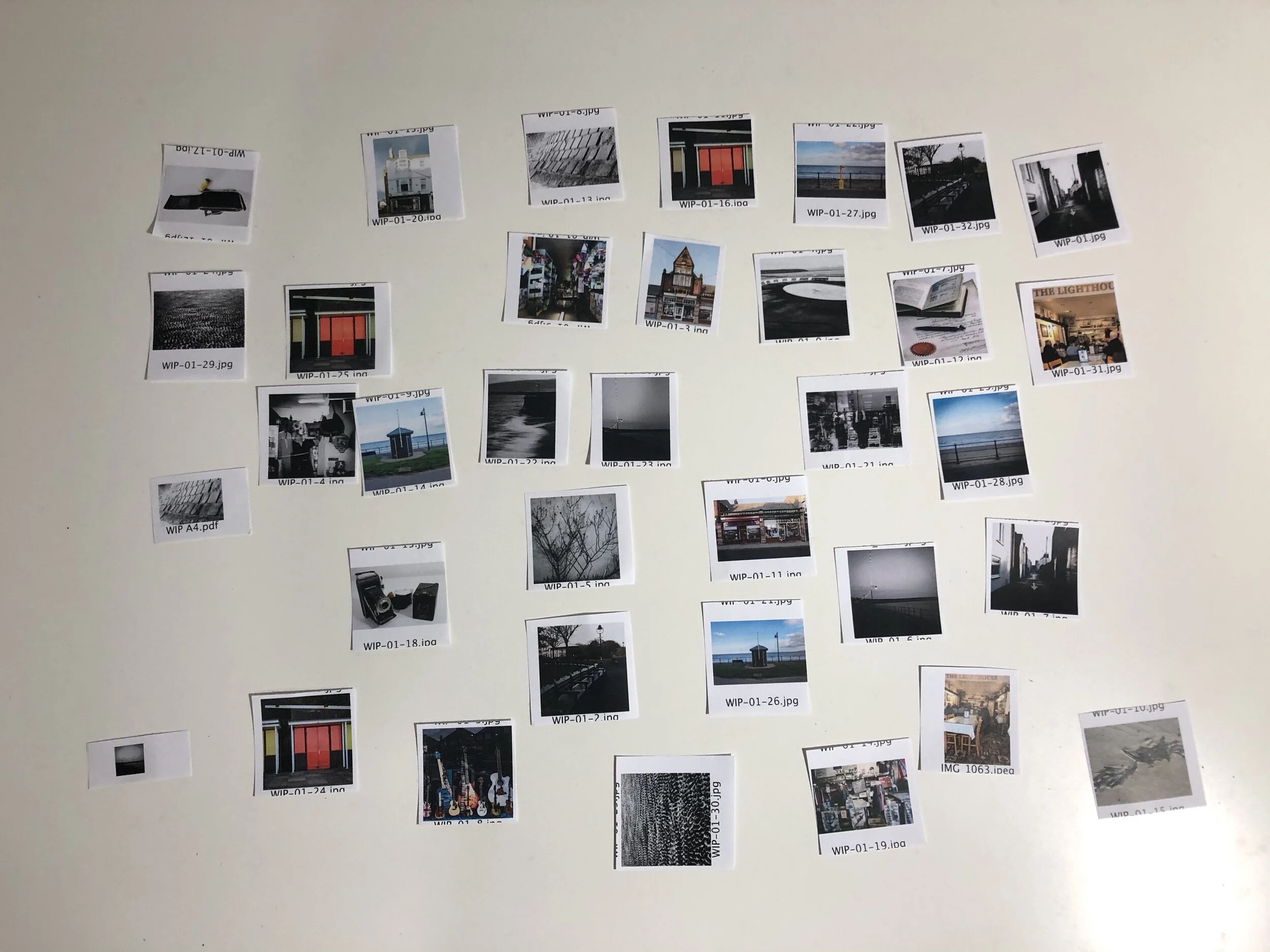I had a constructive 1 to 1 with Steph today were I voiced my concerns concerning finishing my project on time. I showed some of my photographs which had a mixed response. The gentler photos using the vase were positive; however, the more brutal not so much. We discussed the concept that the photographs could show the two sides to my mother's character. Steph suggested that I present my WIP in a book layout and agreed a written narrative can be included. I will try to have my CRJ up to date by the end of this week. Steph also gave me the names of several practitioners who may help in my research. Also, I was asked to look at the lecture I Remember I Remember, given to the BA students.
Photographing Death
I wanted to produce a narrative of my mother’s loss and regret. The used flowers signal the death of my mother, the vase was hers and the picture empty picture frame is a device to let the viewer occupy the photograph with their memories.
‘As the fascination that photographs exercise is a reminder of death, it is also an invitation to sentimentality. Photographs turn the past into an object of tender regard, scrambling moral distinctions and disarming historical judgments by the generalized pathos of looking at time past ( Sontag 1971 p55)’
Dead flowers with empty picture frame
Photographing Flowers
As part of an experiment, I chose to photograph flowers that my partner Jane had kept from our first meeting. She had them hanging on her study wall. It was, at least I thought, providing a link from my past to the present day. Following a meeting with Sarah, I decided not to continue with the idea. It did not fit with my other work, but I found it useful in experimenting with technique. The use of text in the photograph was an attempt to explain the narrative.
!00 year old orange and tankard
Artefacts and desktop photography
This photograph shows a 100-year-old orange which my great grandfather received as a Christmas present in his youth. So rare at the time and according to family folk law, he sat it on a shelf never to be touched. After many years it took on the patterner of pewter and resembled the finish of my grandfather's tankard. I liked the concept that organic material can look the same as that which is human-made. I decided to photograph the two together. It just seemed right with a great story attached. I'm not sure if this will be in my WIP as it does not fit in with my other images.
617 Assault Squadron R.E.
Found this interesting postcard today which gives me important information on which campaigns my father may have taken part in.
Experimenting with still life
Self Portrait
Mother Circa 1940’s
Following on from a lecture with Sarah I decided to continue using artefacts, such as this flower jug and incorporate them with photographs of my parents. I am trying to link the history of my family with out having to resort to text.
Still Life of Vase with a picture taken by my Father
Due to my difficulty in walking at the moment, my only option is to concentrate on desktop photography. I began looking at artefacts belonging to my parents, following on from the theme I started last year. This jug has been in the family since I can remember and assume its dates from the 1950s. My mother would use it regularly for flower arrangements, but sadly in my possession has been relegated to a cupboard. I decided to use this vase as a narrative for my parent's love. My idea initially was to photograph the glass jar and pair it with another photograph creating a diptych. I will try this but decided I would attempt using other images as backgrounds. I found it successful in inserting images within the jar and began working with different photographs relating to the theme. One photo haunted me, taken by my Father in a hotel room he occupied soon after my Mothers death. The picture focuses on an empty chair a metaphor for my Mothers absence? I'm not sure my Father would have consciously thought that but who knows. I intend to explore this concept over the following weeks.
Photographs Furnish Evidence
‘A photograph passes for incontrovertible proof that a given thing happened’ Sontag 1977 p4
Photo Credit: Universal History Archive/Getty Images
To be discussed ……..
John Berger
Video from the BBC series called Ways of Seeing
Following a lecture by Dr Steph Cosgrove entitled Photography the Shapeshifter a particular passage resonated for me.
‘John Berger calls attention to the shifting contexts and meanings of photographs, saying that “An image is a sight that has been recreated or reproduced. It is an appearance, or a set of appearances, which has been detached from the place and time in which it first made its appearance and preserved – for a few moments or a few centuries.” He reminds us here that photographs are made things; however simple or transparent they might first appear, they are constructions. Just like a painting, photographs are the result of choices made by a photographer. For example: the subject matter; what’s included inside and outside of the frame; the aesthetic sensibilities and accompanying technical decisions being made’.
Lecture notes Photography the Shapeshifter Dr Steph Cosgrove Module PH702 Informing Contexts
Sugar Paper Theories
This finally arrived in the post today, better late than never
Tutor Feedback
My tutorials over this term have been quite positive with some good comments. This week however I felt different. My first tutorial was on the whole positive and I felt that my work would have been received well. The following day my tutorial did not go so well and I felt like my project had missed the mark. Both my tutors were right of course but with different opinions. I found myself in a difficult scenario having only two days to get my WIP finished. I think in future terms (should I pass this one) I will stick with just one tutor. Seeing more than one this term has just confused the issue (for me) and left me somewhat discouraged. On the positive side, I have really enjoyed this term and find the standard of teaching exemplary.
More Archive material
During this term, I have come to better understand re-photography and recording archives. I am continually finding new material to include in my project. recently I discovered letters kept inside an old book. One was from my Dad to my Mum on their wedding day. I did wonder if I should use such material but I think it’s important for the story. In the text, he mentions white heather and Laura suggested I might look at this and perhaps photograph heather as a still life. I can also expand this if other letters suggest things.
In the text, my Dad says ‘Keep your Pecker up’ which is a phrase I have never heard him use. I may use this as a subtitle to my project.
My WIP
Following my meeting with Laura it was suggested I print out a contact sheet of my work which would help in the decision how the photographs could work as a story. To see the images printed and being able to move them around without using a computer was inspiring and something I will do for future work. I think I need to get a pin board in my study!
Contact sheet
Jacques-Henri Lartigue
Another photographer I have been introduced to Jacques-Henri Lartigue described in The Guardian newspaper as ‘A photographer who happened to catch the spirit of early 20th-century. One for my OP. His work reminds me of Bill Brandt’s practice. The dark blacks in the shadows.
Jacques-Henri Lartigue
Shop Front photography looking at Valarie Belin
I really enjoy Belin’s work and have tried some more shop photography as I like to call it. This time I experimented with my processing and created some lightroom presets for future work. I am still trying to find a look for my work and consequently, my images sofar are not similar in their processing. This work is so different from my previous practice I feel like a beginner again. I appreciate its early days as I keep saying and I’m not sure at this stage whether I want a particular look as I think this can make a photographers practice stagnate. I think it’s better to experiment.
Shop Front - Filey
Valerie Belin
Following my tutorial with Clare she mentioned Valerie Belins work in relation to my shop front photography. There is an exhibition on at the V&A which I would love to go and see but work commitments don’t allow it. I bought the accompanying brochure which is basically a black and white broadsheet paper and whilst a clever idea is difficult to read at due to its size.
My Fathers Camera
The Sterling II was made in England by Kodak Ltd., introduced in May 1955 and withdrawn in 1959. It is a folding camera taking 6x9cm images on 620 film. (Coe, Brian, "Kodak Cameras, the First Hundred Years", p.140, Hove Foto Books, 1988)
I rediscovered this camera in the attic of my house, looking worse for wear I dusted it off and decided to photograph it for my project. It uses a CL-620 film which is no longer produced but I have found out 120 films can be used. This has sparked the idea I may try using this camera again. The link to my Fathers photography could not get any closer. When I examined the camera I found a roll of used film which was 33 years old. I developed the film and to my delight found a picture of my parents together in my brothers garden.
My Mother and Father taken circa 1986 - photographer unknown
The proprietor in his memorabilia shop - photography Robert McMillan
Cairncross & Sons
I walked past this shop every time I visited Filey as a child, and I was always fascinated by the display in the shop window. It sells all kinds of memorabilia from old seaside postcards to militaria. I went inside for the first time this week and found the proprietor had opened the shop 50 years ago. Formerly a gent's outfitters it gradually transformed into this curio shop. The shop is fascinating, like stepping back in time, its how I remember shops back in the 1970s — most of the memorabilia for sale are military-related including some nazi pieces. I do wonder, due to my fathers past, if this was the reason my we never went in.
Fay Godwin
Following a tutorial, it was suggested I look at Fay Godwin’s work. This video is a fascinating insight into one of the UK’s best Landscape artists.
Bill Brandt
Although id heard of Bill Brandt Id never studied him, it was suggested some of my work drew similarities with Brandts work. This video taken in 1983 is an in-depth interview and retrospective of his work.
I Found this Photo
Working though the archive I found this photograph. My Dad took it soon after my mum died. Its a picture of the inside of his hotel room when he decided to have a break after the funeral. I can’t imagine how my Dad was feeling.



















